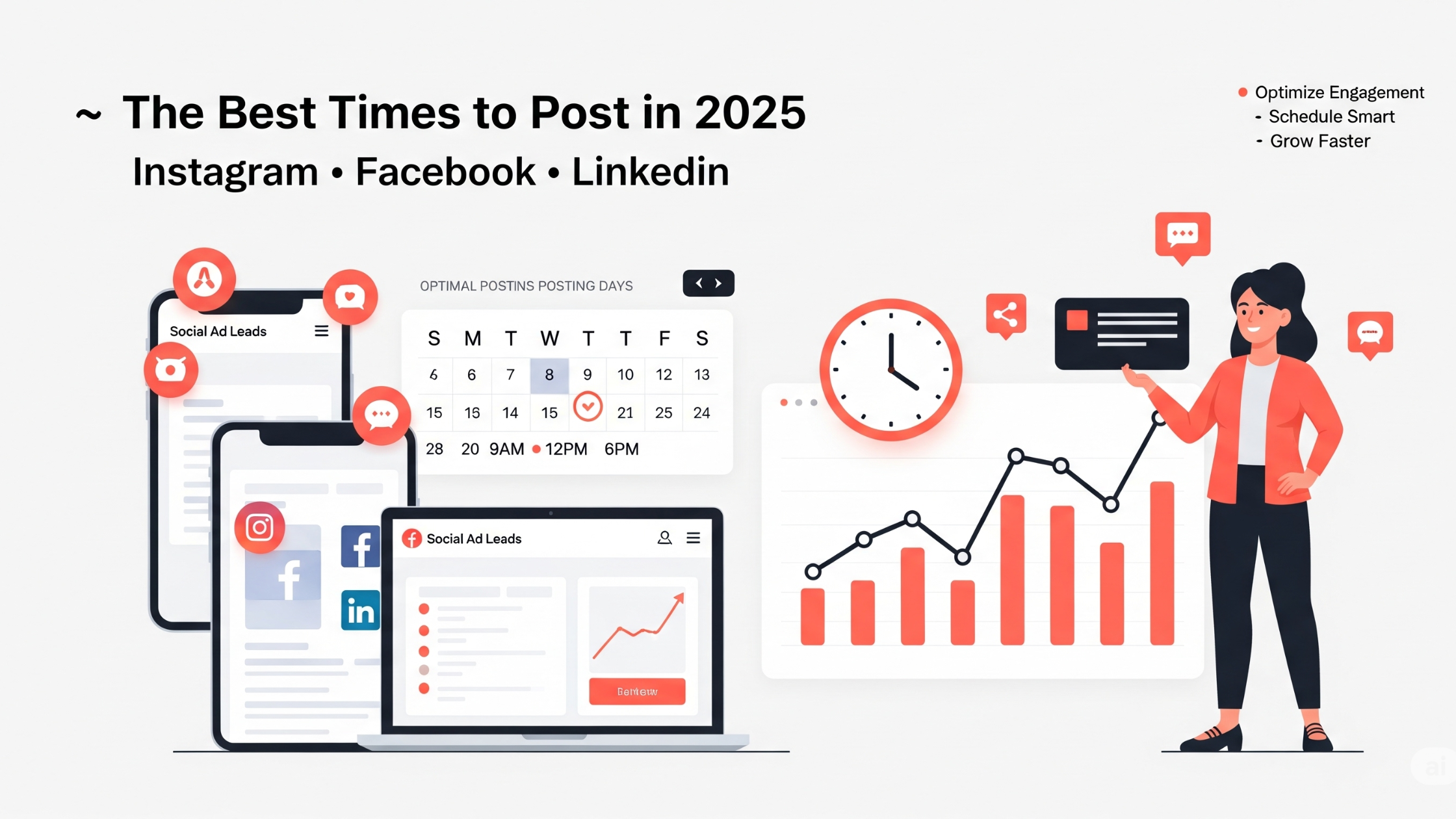In 2025, your content strategy needs more than great visuals and clever captions. If you’re not posting Instagram, Facebook, and LinkedIn at the right time, your carefully crafted content might never reach your audience. As algorithms continue to evolve across social platforms, timing your posts has become one of the most powerful, underutilized tools for boosting engagement, visibility, and conversions.
In this blog, we dive into the best times to post on Instagram, Facebook, and LinkedIn in 2025, backed by current user behavior trends and marketing insights. Whether you’re a brand, creator, or marketer, this guide will help you optimize your posting schedule for real results.
Why Posting Time Still Matters in 2025
Social media platforms like Instagram, Facebook, and LinkedIn all operate on algorithms that reward early engagement. When your post gets likes, comments, or shares shortly after going live, it signals value to the platform, prompting the algorithm to show it to even more users.
But if your audience isn’t online when you post? That early engagement never happens—and your content gets buried.
Best Time to Post on Instagram in 2025
Instagram is still one of the most engagement-driven platforms, especially for visual storytelling, influencers, brands, and product-based businesses.
Top Times to Post:
- Weekdays (especially Tuesday & Thursday): 9:00 AM – 11:00 AM
- Evenings for Reels & Stories: 7:00 PM – 9:00 PM
- Best Day: Thursday
- Worst Day: Sunday
Why These Times Work:
Instagram users tend to check the app during their morning routines and wind down with Reels and Stories at night. Morning posts catch people during coffee breaks or commutes, while evenings are ideal for entertainment-based content.
Content-Type Breakdown:
- Carousels and single images: Mornings (9–11 AM)
- Reels and Stories: Evenings (7–9 PM)
- Live Videos: Weekdays after 6 PM
Best Time to Post on Facebook in 2025
Facebook may not be the shiny new app anymore, but it remains a powerhouse for brand awareness, especially among older and mid-career demographics.
Top Times to Post:
- Weekdays: 8:00 AM – 10:00 AM and 12:00 PM – 1:00 PM
- Best Days: Wednesday and Friday
- Worst Time: After 8:00 PM
Why These Times Work:
Most users scroll Facebook during early work hours or on lunch breaks. The platform’s algorithm still prioritizes meaningful engagement like shares, comments, and longer dwell times—so post when people have time to interact.
Content-Type Breakdown:
- Link shares and articles: Mornings
- Product promos and video content: Lunchtime
- Live sessions or announcements: Early afternoon
How to Customize Your Posting Strategy
While general best times offer a reliable starting point, your specific audience may behave differently. Here’s how to personalize your posting schedule:
Use Platform Analytics
Instagram Insights, Facebook Page Insights, and LinkedIn Analytics all offer data on when your followers are most active. Analyze this weekly.
Consider Time Zones
If your audience is global, stagger your posts or create different schedules for different regions. Tools like Buffer or Hootsuite make this easy.
A/B Test Different Times
Run tests on similar posts at different hours and measure engagement rates. Within a few weeks, you’ll see patterns emerge.
Format Matters Too
Short-form video content (Reels, Stories, Facebook Shorts) performs better in the evening, while educational or professional content performs better in the morning.
Quick-Glance Posting Time Chart for 2025
| Platform | Best Days | Best Times | Worst Times |
|---|---|---|---|
| Tues, Thurs | 9–11 AM, 7–9 PM | Sunday | |
| Wed, Fri | 8–10 AM, 12–1 PM | After 8 PM | |
| Tues–Thurs | 7–9 AM, 5–6 PM | Sat & Sun |
Final Thoughts: Turn Timing into a Growth Tool
In a world of endless content, perfect timing gives your brand a major edge. By posting when your audience is most active on Instagram, Facebook, and LinkedIn, you can supercharge engagement, boost your organic reach, and get better results from every piece of content.
Don’t let great content go unseen. Start using these best posting times as part of your 2025 content strategy—and watch your numbers climb.

